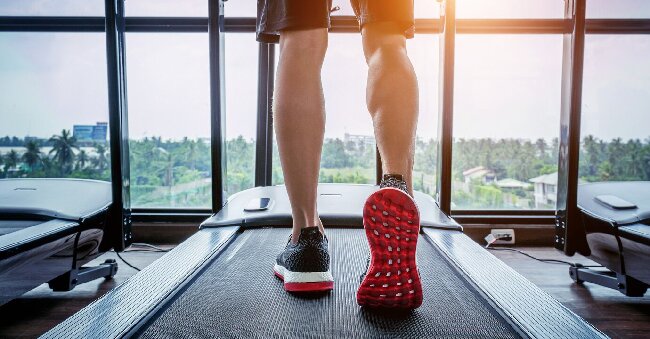
Running Machines and Heart Health: How Cardio Equipment Can Boost Your Cardiovascular Fitness
Looking to improve your cardiovascular fitness and overall health? Cardio equipment may be the key to achieving your goals.
In this article, we will explore what cardiovascular fitness is, how cardio equipment can help improve it, the different types of cardio equipment available, and the benefits of using this equipment.
We will discuss how often you should use cardio equipment for optimal results and provide some tips for using it safely. So, lace up your running shoes and let’s dive into how cardio equipment can boost your heart health!
What Is Cardiovascular Fitness?
Cardiovascular fitness refers to the efficiency with which the heart, lungs, and blood vessels supply oxygen and nutrients to working muscles during sustained physical activity, promoting overall cardiovascular health and optimal function of the cardiovascular system.
This type of fitness is crucial for maintaining a healthy heart and preventing cardiovascular diseases. Aerobic exercises, such as running, swimming, or cycling, are particularly beneficial for improving cardiovascular fitness as they involve continuous, rhythmic movements that elevate the heart rate and challenge the lungs to take in more oxygen.
By engaging in regular aerobic activities, one can strengthen the heart muscle, improve blood circulation, lower blood pressure, and enhance the body’s ability to utilize oxygen efficiently. These exercises also help in reducing the risk of heart attack, stroke, and other cardiovascular issues.
How Does Cardio Equipment Help Improve Cardiovascular Fitness?
Cardio equipment such as treadmills, elliptical trainers, and exercise bikes aids in improving cardiovascular fitness by providing a platform for engaging in structured cardio workouts that elevate heart rate, enhance endurance, and target various muscle groups for a comprehensive fitness regimen.
These machines are equipped with features like incline settings and resistance levels that allow users to customize their workouts according to their fitness goals. By adjusting the speed, incline, or resistance, individuals can challenge themselves and push their cardiovascular limits, ultimately leading to improved endurance and stamina.
Many cardio equipment models come with built-in heart rate monitors, enabling users to track their heart rate throughout the workout and maintain the desired intensity level for optimal cardiovascular benefits.
What Are the Different Types of Cardio Equipment?
There are several types of cardio equipment available for enhancing cardiovascular fitness, including running machines like treadmills, elliptical trainers, stationary bikes, rowing machines, and stair climbers, each offering unique benefits and workout variations.
-
Running machines, such as treadmills, are a popular choice for those looking for a classic cardio workout option that simulates running or walking indoors. Treadmills often have adjustable speed and incline settings to challenge users at different fitness levels.
-
Elliptical trainers provide a low-impact, full-body workout that targets multiple muscle groups simultaneously.
-
Stationary bikes offer a seated cardio option that is gentle on the joints and can be great for individuals with knee or hip concerns.
-
Rowing machines mimic the motion of rowing a boat, engaging the upper and lower body for a comprehensive workout.
-
Stair climbers provide a challenging way to improve leg strength and cardiovascular endurance by simulating the motion of climbing stairs.
Treadmills
Treadmills are popular cardio machines commonly used for indoor running or walking exercises, equipped with features such as tracking progress, adjusting speed for interval training, and requiring appropriate running shoes for optimal performance.
These machines offer users the ability to monitor their fitness progress by tracking metrics like distance covered, calories burned, and heart rate. The option for interval training allows individuals to vary their workout intensity, helping to increase cardiovascular fitness and burn more calories. It is crucial to wear suitable running shoes when using a treadmill to provide proper support, cushioning, and stability, reducing the risk of injuries and ensuring a comfortable workout experience.
Stationary Bikes
Stationary bikes offer a low-impact cardio workout option that promotes health monitoring, effective calorie burn, and reduced stress on joints, making them ideal for individuals seeking cardiovascular benefits with minimal impact on the body.
These bikes provide a convenient way to engage in physical activity without putting excessive strain on the knees, hips, and ankles. Regular use can improve heart health, boost metabolism, and enhance overall endurance. With built-in features like heart rate monitors and customizable resistance levels, users can track their progress and tailor workouts to their fitness goals. Whether you’re a beginner starting a fitness journey or an experienced athlete recovering from an injury, stationary bikes offer a safe and efficient way to stay active and improve your cardiovascular health.
Ellipticals
Ellipticals, also known as elliptical trainers, offer a full-body workout that targets multiple muscle groups while maintaining a high intensity level to elevate pulse rate, improve cardiovascular endurance, and enhance overall fitness.
They are an excellent option for individuals looking to engage in high-intensity workouts with low impact on joints. One of the key advantages of ellipticals is their ability to provide a challenging cardiovascular workout while minimizing stress on the knees, hips, and lower back. The smooth, fluid motion of elliptical machines reduces the risk of injury, making them ideal for individuals of all fitness levels. Ellipticals often come equipped with various resistance levels and preset workout programs to help users customize their fitness routines effectively.
Rowing Machines
Rowing machines provide a comprehensive workout that enhances aerobic capacity, aids in weight management through calorie burn, and promotes strength training by engaging various muscle groups, offering a versatile option for improving cardiovascular fitness.
The rhythmic motion of rowing helps in building endurance and stamina over time, making it an effective cardiovascular exercise. The resistance provided by rowing machines can be easily adjusted to suit different fitness levels, empowering individuals to progressively challenge themselves. By incorporating rowing into your exercise routine, you can enjoy a full-body workout that targets muscles in the legs, back, arms, and core, leading to improved overall strength and muscle tone.
Stair Climbers
Stair climbers provide an effective means of cardiovascular training by increasing workout intensity, delivering various health benefits such as improved heart health and stamina, making them a valuable addition to cardio workouts.
Utilizing stair climbers can help in enhancing cardiovascular fitness levels by boosting overall endurance and strengthening the heart muscles. The repetitive motion of climbing stairs engages major muscle groups, promoting calorie burn and weight management. This form of exercise is particularly beneficial for individuals looking to improve their overall cardiovascular health, as it effectively elevates heart rate while minimizing impact on joints, making it suitable for a wide range of fitness enthusiasts.
What Are the Benefits of Using Cardio Equipment?
Utilizing cardio equipment offers numerous benefits, including improved heart health, calorie burn for weight loss, increased endurance and stamina, lower risk of chronic diseases, and overall enhancement of fitness level and wellness.
Incorporating cardio equipment into your exercise routine can help you establish a consistent habit of physical activity, leading to long-term benefits for your health. By engaging in regular cardio workouts, you not only boost your cardiovascular fitness but also strengthen your muscles, improve your mood, and reduce stress levels.
The convenience of having access to cardio equipment at home or in a gym makes it easier to prioritize fitness goals and maintain a healthy lifestyle. With a variety of options such as treadmills, ellipticals, and stationary bikes, there is something for everyone to enjoy and reap the rewards of physical activity.
Improves Heart Health
Regular use of cardio equipment contributes significantly to improving heart health by enhancing cardiovascular function, strengthening the heart muscle, and promoting overall cardiac well-being through structured cardiovascular training sessions.
This type of exercise helps to increase the heart’s efficiency in pumping blood throughout the body, leading to better circulation and oxygen delivery to the muscles. Cardio workouts are known to reduce the risk of heart disease, lower blood pressure, and improve cholesterol levels, all of which are crucial factors for maintaining a healthy cardiovascular system. Engaging in cardio equipment activities can also aid in managing stress levels, boosting mood through the release of endorphins, and supporting weight management efforts, contributing to an overall improvement in heart health.
Burns Calories and Aids in Weight Loss
Cardio equipment facilitates calorie burn and aids in weight loss by creating a calorie deficit through consistent workouts, promoting fat loss, supporting weight management goals, and offering exercise variety for enhanced results.
By engaging in regular cardio sessions, individuals can effectively target excess body fat as the body taps into stored energy reserves to fuel the workout. This process, known as fat oxidation, is crucial for shedding unwanted pounds and achieving a leaner physique.
Incorporating a mix of cardio equipment such as treadmills, stationary bikes, and ellipticals not only prevents workout monotony but also challenges different muscle groups, leading to improved overall fitness and sustainable weight loss outcomes.
Increases Endurance and Stamina
Engaging in cardio workouts using equipment like treadmills and elliptical trainers boosts endurance and stamina by increasing oxygen intake, enhancing aerobic capacity, and improving the body’s ability to sustain physical activity over extended periods.
This improved efficiency in oxygen consumption leads to the body adapting to utilize oxygen more effectively, allowing individuals to exercise for longer durations with reduced fatigue.
By regularly incorporating cardio equipment into your fitness routine, you can gradually enhance your aerobic endurance, enabling you to tackle more challenging workouts and tasks with greater ease.
Building stamina through cardio activities not only benefits your physical health but also promotes mental alertness and overall well-being, emphasizing the importance of consistent cardiovascular exercise for a balanced lifestyle.
Lowers Risk of Chronic Diseases
Regular use of cardio equipment reduces the risk of chronic diseases such as heart conditions, diabetes, and obesity by promoting overall wellness, encouraging a healthy lifestyle, and supporting health monitoring practices for preventative care.
Incorporating cardio exercises into your routine not only boosts cardiovascular health but also helps in managing weight, reducing blood pressure, and increasing overall endurance. With features like heart rate monitoring and calorie tracking on these machines, individuals can keep a closer watch on their fitness progress and make informed decisions for their health. This integration of health monitoring benefits into the workout experience empowers users to take charge of their well-being and stay motivated towards maintaining a healthy lifestyle.
How Often Should You Use Cardio Equipment for Optimal Results?
The frequency of using cardio equipment for optimal results depends on individual fitness goals, training programs, exercise regimens, and the number of training sessions planned per week to achieve desired cardiovascular fitness levels.
Tailored training programs play a crucial role in determining how often one should engage with cardio equipment. Those following personalized workout plans might have specific target heart rates or durations to meet.
Structured exercise regimens further impact the frequency of cardio equipment use, as individuals may need to incorporate certain types of cardio activities on designated days for a well-rounded workout routine.
Proper planning and scheduling of training sessions also contribute to consistent equipment utilization, ensuring that cardio workouts are integrated seamlessly into one’s lifestyle.
What Are Some Tips for Using Cardio Equipment Safely?
To use cardio equipment safely, it is essential to warm up and cool down properly, start exercises gradually to prevent injuries, track progress using fitness apps, and incorporate safety measures to ensure a safe and effective workout experience.
- When utilizing cardio machines such as treadmills, ellipticals, or stationary bikes, remember to adjust the intensity gradually to prevent sudden strain on muscles.
- It’s also beneficial to leverage the built-in safety features of the equipment, such as emergency stop buttons and safety clips.
Another vital aspect is to always stay hydrated during your workout session to avoid dehydration and cramping. By following these safety tips and integrating them seamlessly into your fitness routine, you can maximize the benefits of your cardio workouts while minimizing the risk of injuries.
Warm Up and Cool Down Properly
Proper warm-up and cool-down routines are essential before and after using cardio equipment to prepare the body for exercise, prevent injuries, improve flexibility, enhance core strength, and optimize workout performance.
During a warm-up session, the body gradually increases blood flow to the muscles, loosens joints, and elevates the heart rate, which helps to reduce the risk of strains and sprains during the workout.
Similarly, a cool-down session allows the body to gradually return to its resting state, preventing blood pooling and promoting muscle recovery. By incorporating these routines, individuals can optimize their overall workout experience, increase their range of motion, and prevent muscle stiffness or soreness post-workout.
Start Slow and Gradually Increase Intensity
Beginning cardio workouts at a moderate pace and progressively ramping up the intensity through interval training techniques can lead to performance enhancement, improved workout intensity, enhanced coordination, and better cardiovascular conditioning.
Interval training involves alternating periods of high-intensity exercise with periods of lower-intensity recovery or rest. This method not only challenges the body in different ways but also boosts calorie burn and increases overall fitness levels. Incorporating interval training into your cardio routine can help improve endurance, speed up metabolism, and optimize cardiovascular health. As you gradually increase the intensity of your workouts, you’ll notice enhanced athletic performance, greater stamina, and improved overall fitness levels. This approach allows for a more sustainable and effective progression towards your fitness goals.
Listen to Your Body and Rest When Needed
Paying attention to signals from your body during cardio sessions is crucial, allowing for adequate rest and recovery when needed to prevent overtraining, enhance physical fitness levels, and tackle workout challenges effectively.
By tuning in to how your body responds to different intensities and durations of cardio exercises, you can adjust your routines accordingly to optimize results.
Listening to your body can not only help in avoiding injuries but also in identifying areas where you need to focus and improve.
Incorporating rest and recovery days into your routine is essential for muscle repair and growth, as well as overall performance enhancement. These breaks allow your body to recharge and come back stronger, promoting long-term progress in your fitness journey.
Stay Hydrated
Maintaining hydration levels by consuming adequate water and electrolytes during cardio exercises is essential to support overall health, optimize performance, establish healthy habits, and ensure proper physiological function during workouts.
Proper hydration plays a crucial role in regulating body temperature and lubricating joints, which are particularly important during intense cardio sessions. Without sufficient hydration, individuals may experience fatigue, decreased endurance, and muscle cramping.
By replenishing fluids lost through sweat and maintaining electrolyte balance, exercisers can enhance their stamina and focus throughout their workout. Building consistent hydration habits not only benefits immediate performance but also contributes to long-term health and fitness goals.
It is vital to listen to your body’s thirst cues and drink water regularly to stay adequately hydrated, promoting overall well-being.




No Comments